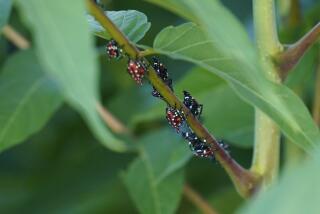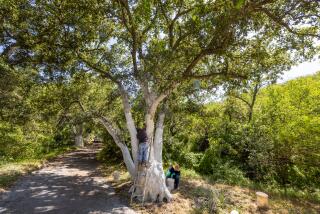Western yellow jacket
- Share via
(LA)[VESPULA PENSYLVANICA]
How many picnics have been ruined by the arrival of pesky, and potentially dangerous, yellow jackets? Yellow-and-black “meat bees” not only descend out of nowhere for a share of the goodies, but if one is threatened or harmed it releases a chemical signal that quickly draws nest mates for a full-scale attack. These adult workers, however, are collecting protein-rich foods to nourish growing larvae back at the nest. In return, larvae secrete a sugary material eaten by the adults. Toward the end of summer, the larvae stop producing this treat, forcing adults to search for sugars outside the nest. Whereas yellow jackets target meats early in summer, they later find fruit, cakes and sodas much more to their liking.
NATURAL HISTORY
Before the 1990s this native yellow jacket was the type most widespread in California, but an introduced German yellow jacket that nests around houses and yards is giving these insects an increasingly tarnished reputation as pests. Yellow jackets play an important ecological role by disposing of carrion, and the underground nests of native species provide a significant food source for black bears in late summer.
KEY CHARACTERISTICS
The Western yellow jacket is the only one of California’s eight or so species with a yellow ring encircling its black eyes. In years with warm, dry springs, it may be extremely abundant.
More to Read
Sign up for The Wild
We’ll help you find the best places to hike, bike and run, as well as the perfect silent spots for meditation and yoga.
You may occasionally receive promotional content from the Los Angeles Times.






